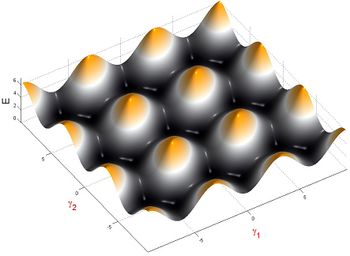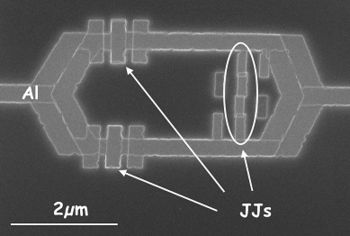Superconducting nanostructures for quantum information processing
Solid state based quantum information processing systems are promising, since they can lead to scalable systems with short quantum-gate switching times. The realization of solid state based quantum information processing requires the development of suitable quantum bits (qubits) based on solid state nanostructures. To achieve this goal, we have established an intense interaction between solid state and quantum information theory, solid state physics and technology as well as advanced nanofabrication techniques within the Cooperative Research Center 631.
The research objective of Walther-Meissner-Institute is focussed on the fabrication and characterization of superconducting phase qubits involving -Josephson junctions as phase batteries. The qubits are realized by superconducting nanostructures fabricated by electron beam lithography and shadow evaporation techniques. Furthermore, advanced thin film technology is used to obtain complex heterostructures consisting of superconducting layers separated by ferromagnetic and dielectric layers of nanometer thickness.
The goal is to obtain naturally degenerate two level quantum systems as the basis for calm qubits with long phase coherence time. The qubits are implemented using both metallic and oxide superconductors and studied with respect to their suitability for quantum information processing. Here, priority is given to the clarification of the physical properties of the phase qubits as well as the analysis of decoherence. Our research activities are aiming at the optimization of superconducting qubits and the peripheral circuits. Moreover, methods for the manipulation of the qubits as well as concepts for the coupling of two qubits have to be developed and tested.

